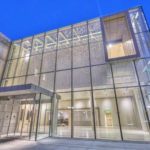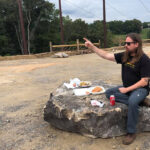Six years of design, engineering and computer programming were brought to a climax this week with the hoisting and mounting of two highly specialized receivers onto radio telescopes at the Pisgah Astronomical Research Institute (PARI), in Transylvania County, N.C. Faculty and students at UNC Asheville and Furman University, and PARI staff, designed and constructed this new instrument for studying signals from space. The two custom-built receivers, each mounted on PARI’s 26-meter radio telescopes, will be linked using specialized, high-speed computers to create a complex piece of equipment called an interferometer.
A team led by Brian Dennison, UNC Asheville’s Glaxo Wellcome Professor and professor of Physics, will use the interferometer to monitor some fifty distant quasars for “extreme scattering events.” These rare disturbances in interstellar space distort the otherwise fairly constant signals from quasars and have only been detected about a dozen times. Dennison was part of a group of scientists that first discovered this rare phenomenon 25 years ago. Securing a series of grants from the National Science Foundation totaling more than $1 million, Dennison led the effort to design and build the new interferometer, which he calls the best tool for monitoring and learning more about extreme scattering events.
PARI is dedicated to providing hands-on educational and research opportunities for a broad cross-section of users in science, technology, engineering and math (STEM) disciplines. “This interferometer project is a perfect application of PARI’s goal to have scientists and students working side by side on our campus,” said PARI President Don Cline. “PARI’s Facilities Director Thad McCall, Site Engineer Ben Goldsmith and the entire PARI team did a magnificent job installing these receivers into our 26-meter radio telescopes. It was a great collaborative effort with Dr. Dennision and UNC Asheviille. The result is a world-class research-grade instrument of which we can all be proud.”
The installation was completed Tuesday and Wednesday, Dec. 12 and 13. On Tuesday, the receiver boxes, each weighing more than 1,500 pounds, were hoisted 75 feet off the ground by crane and installed by skilled PARI staff in raised buckets. Wednesday morning, the work crew checked the receivers’ positioning, bolted the equipment in, and attached tubing to bring in dry air; a dehumidified environment is crucial for some of the components.
Faculty and student interns worked during semester breaks and in addition to their everyday work over six years to complete the project. Said Dennison, “At national observatories, the engineers have the equipment set up, you take your data and leave. That is efficient but it means that scientists and students don’t necessarily get their hands on the equipment they’re using. Here, it’s nuts and bolts from the get-go, and our students are intimately involved with the instrumentation, which is a great experience. If you’re involved in the design of equipment, you know what it’s capable of and can come up with new applications. It is wonderful that PARI provides this unique environment for undergraduate students to gain experience they cannot get elsewhere.”























